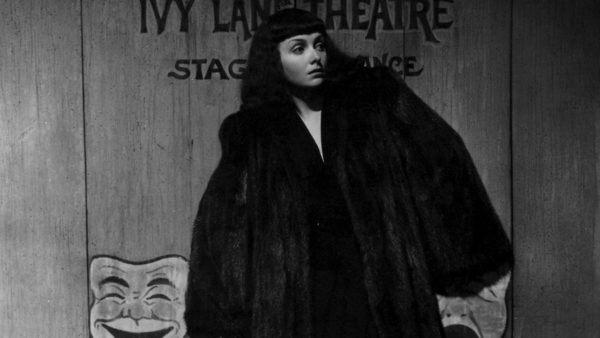
In Horror Bucket List, I fill in gaps in my horror film knowledge based on recommendations from friends on Twitter. We then have a back and forth discussion about their history with the film.
Next up: 1943’s The Seventh Victim with David Demchuk, @dd_toronto.
Spoilers follow…
Plot: Mary Gibson (Kim Hunter) woman in search of her missing sister Jacqueline (Jean Brooks) uncovers a Satanic cult in New York’s Greenwich Village, and finds that they may have something to do with her sibling’s random disappearance.
Obviously – due to the nature of this project – I had never seen The Seventh Victim before this, though I knew about it because of podcasts like Gaylords of Darkness and the Val Lewton episode of You Must Remember This. When did you first see The Seventh Victim?
I am a huge Val Lewton fan and by my 20s had been able to watch or rent almost all of the films he had produced, but The Seventh Victim had eluded me for years. It rarely played on television or in repertory cinemas. I think it was the early 2000s before I was finally able to watch the film, likely on VHS rented from Toronto’s legendary Suspect Video. (Shortly after it was released on DVD as part of the Val Lewton Collection.) I was worried it would be a letdown but in fact it was a revelation for me.
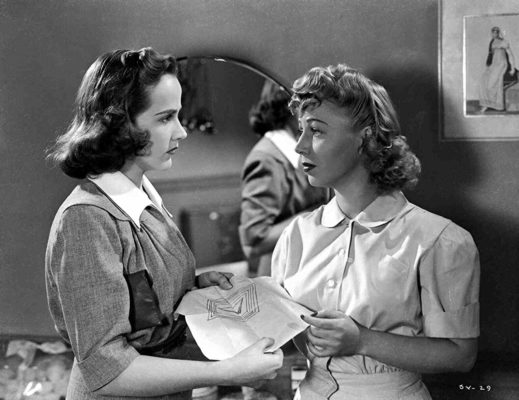
Thank goodness for collections like that (I also own the Val Lewton Collection; it’s how I watched the film!) What is it about the film that you like/love?
Of all the Val Lewton films, this is the one that got under my skin and stayed there. For such a straightforward concept, it unfolds in such an odd and bleak and unsettling way, particularly when the perspective shifts from the film’s young central figure, Mary, to that of her doomed sister, Jacqueline. It is right on the line between film noir and psychological horror.
Because of some post-production edits imposed by the studio, there are certain moments and through-lines that don’t quite add up but feel like they should. And there are also fascinating intrusions into the narrative–scenes that discuss or illustrate certain themes or that provide a kind of metatextual commentary on the events. One can easily imagine this film as an influence for David Lynch.
Also, let’s get to the gay stuff: By the time I had the chance to see the film, a significant mystique had emerged around it, particularly around the barely veiled queerness of the Greenwich Village cult and the cosmetics factory La Sagesse (in the script it’s La Jeunesse–an interesting swap-out considering that La Jeunesse is refers to youth and La Sagesse refers to wisdom), and the ‘unusual bond’ between Jacqueline and her hairdresser, Frances Fallon (Isabel Jewell). All in all, it felt very much like someone in the ‘40s (in this case director Mark Robson) had looked far into the future and had made a film just for me. I can’t imagine what it would have been like to be a young queer person and watch this film in a theatre the year it was released.
Overall the film is dominated by strong female personalities. As queer men, I feel like we’re constantly performing coded readings on films, but even at Highcliff, where Mary has been studying when the film opens, there’s a “more than friends” (ie: lesbian) vibe to Mrs Loughwood and Mrs Gilchrist.
I do love all these stern, solid husky-voiced women and their whispering subordinates! I think it’s Mrs. Gilchrist who takes Mary aside, away from Mrs. Loughwood, and tells her not to return to Highcliff, no matter what she finds out about her sister. “One must have courage to really live in the world.” Highcliff feels as much like a convent as a school; its halls are lined with stained glass and echoes of sung scales and French and Latin lessons can be heard. It’s a shelter from the cruel realities of the outside world.
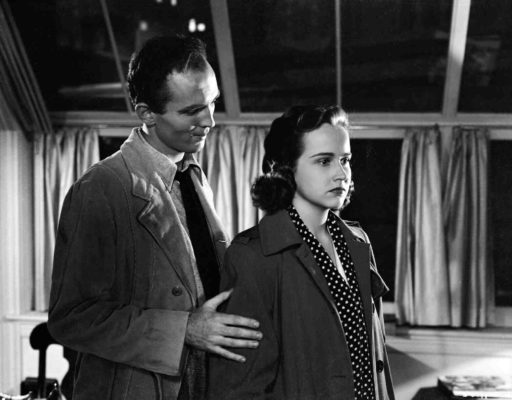
Mary and Gregory Ward (Hugh Beaumont) ultimately wind up together, despite having virtually no chemistry and the fact that he is married to her sister. Am I alone in thinking Mary was a much better fit with dreamer/poet, Jason Hoag (Erford Gage)?
All the relationships in the film are peculiar–Mary and Gregory Ward declare their love for each other over a matter of days, even though she is his wife’s sister and at least 14 years younger than him! A guest at a party reveals that Jacqueline has left her husband to have an affair with her psychiatrist, Dr. Judd (the delightfully tart Tom Conway, who turns out to be a decent guy and a real hero despite our first impressions). Jacqueline herself may or may not be in a relationship with Frances Fallon–they certainly have more chemistry with each other than with any of the men.
This film was made and shown during the war, when many men were away from their homes in combat. More women were taking leadership roles and taking control of their lives, and the film gives a real sense of that. Even Mary, who is in her late teens and still in school, tells Jacqueline’s husband Gregory that she’s not a child and won’t be treated like one–and he acquiesces and apologizes, and then connects her to what will be her first adult job. It’s a surprising exchange now, and it must have been even more startling when the film was first released.
The combative relationship between Hoag and Dr. Judd occasionally feels like a burgeoning love affair, too.
Yes, there’s an odd vibe among the men in the film as well–Jason the poet, Judd the psychiatrist and Gregory the lawyer husband.
Many times I wondered to myself, “How did this get made?” And the simple answer is that much of this queerness is less in the text than in the performances, and in a worldview which permeates the film that, for a censor, would be difficult to pin down.
Hoag and Dr. Judd have several moments where their frostiness starts to melt and they develop a respect and even a fondness for each other. Jason at first does seem like the logical choice for Mary–he’s so excited to show her his garret and spout bad poetry at her–but in the end she only has eyes for Gregory. Intellectually at least, Jason and Judd are a much better match.
Time for a sequel!
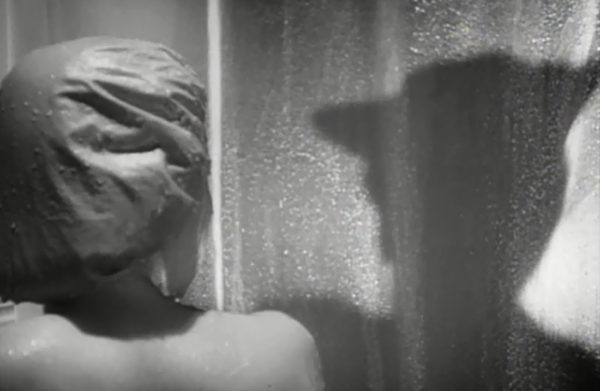
Do you have a specific scene or scare that you like to revisit or that comes to mind when you think of the film?
Oh wow, so many! The break-in into La Sagesse and the long wait before August (Lou Lubin), the private investigator, emerges into the hall and collapses–and then the subsequent scene with Mary and the partygoers on the subway; the shower confrontation that anticipates the notorious murder in Hitchcock’s Psycho; the moment when Mary first finds the startlingly beautiful Jacqueline, who appears silently at a doorway, holds a finger to her lips and then promptly vanishes; the increasingly intense, ever-darkening scene where the Palladists attempt to pressure Jacqueline to drink poison and end her life (and then its climax!); Jacqueline’s terrified–and terrifying–chase through the streets and alleys of lower Manhattan, momentarily escaping her pursuer by joining a jolly band of stage performers. And, of course, the final moments of the film, when ailing neighbour Mimi leaves to go out and dance, as we hear a chair fall over in the room next door.
I’ll confess that I’d heard so much about that final moment that I was surprised at how quickly it passes. There were times throughout the film where I felt editor John Lockhert was a little heavy handed with his cuts, which can make for some very speedy transitions, but you can really feel that studio interference in that abbreviated ending. With those missing few seconds, it just doesn’t have the same punch! I barely realized we had reached that devastating moment when Jacqueline elects to take her own life and suddenly the damn film was over!
You know, I like that abruptness. It’s so fast, and somewhat muffled, that your immediate response is “Wait, what?” and as you realize what’s happened, it’s quietly devastating. It’s so clear from our repeated encounters with Jacqueline that she is doomed. There is simply no way out for her, and the chase through the lower east side confirms that she will never be safe; she will never be left alone.
Jacqueline’s encounter with her neighbour Mimi (Elizabeth Russell), who is dying but wants to live, is fascinating and chilling. Mimi has decided to go out and dance, she wants to enjoy herself. “What then?” Jacqueline asks, and then answers, “And then you’ll die.” She can’t see any other path, any other point. And then she goes into the room with the noose and the chair.
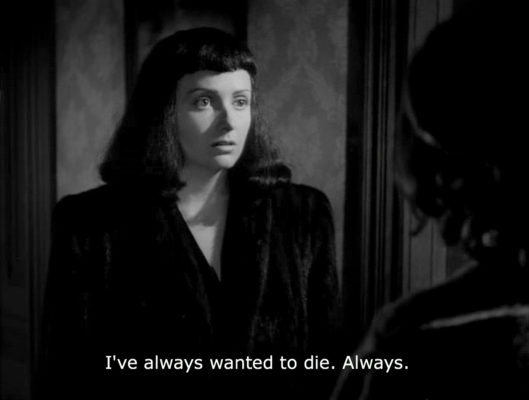
Even then, we cut to her sister and her husband standing by a window, talking about how they love each other, but can’t be together, before we return to Mimi leaving her apartment, hair beautifully coiffed, gorgeous sequined gown–and then the clunk of the chair from behind the door. Then Mimi descends the stairs and the John Donne quote from the top of the film comes back as a voiceover. Jacqueline has made her choice and has met her fate. “I’ve always wanted to die,” she says earlier, and now she has. The film has nothing left to say.
(The original ending is quite different–Jacqueline’s death is followed by an attempt at a happy denouement in Dante’s restaurant: Gregory and Mary talking about new hopes and new plans; Jason encouraging Mary not to mourn, while concealing his own hopelessness and despair.)
Oh that original ending sound terrible! I like the quiet devastation of it; I think I simply wanted another beat or two before the credits roll.
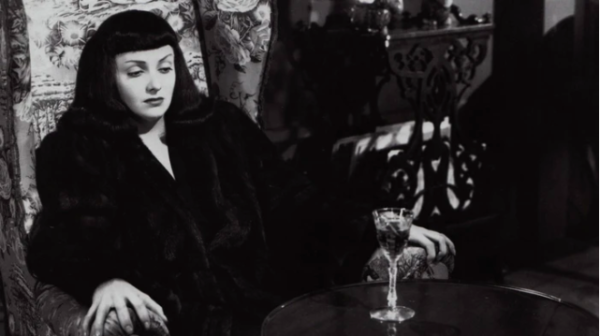
Now, we have to discuss this bizarre depiction of a Satanic cult of pacifist devil-worshippers whom everyone seemingly knows about! On one hand, it makes absolutely no sense. And yet, on the other hand, it’s so brazen and unique compared to more conventional films. What do you think of the film’s depiction of cults and evil? And what do you speculate was their plan (does it relate to the La Sagesse cosmetic company)?
Yes, it seems like all of Greenwich Village is abuzz about the Palladists! Of the many devil cults I’ve enjoyed–on film, let me be clear–this is probably my favourite, just because it is so intelligent and sophisticated (except for poor dense Frances), so passive-aggressive and so vicious.
I love how they have this weird contradictory code that even they complain about. ‘We are pledged to non-violence–and yet our betrayers must die? But how??’ Well, they hector them to death, that’s how, murmuring from the shadows and pushing goblets of poison into their faces.
Instead of being silly, it is really really nasty, as only certain queer house parties can be. We hear that six previous betrayers have been harangued into killing themselves, and that makes Jacqueline…the seventh victim!
Also: The Palladists are supposedly super-secretive, yet Jacqueline’s former assistant, who now runs her cosmetics company La Sagesse, puts their Satanic symbol on all of the products–and then is furious when Mary comes asking about Jacqueline with a drawing of the symbol in-hand. “That’s us! She’s asking about us!” Lady, talk to your marketing team.
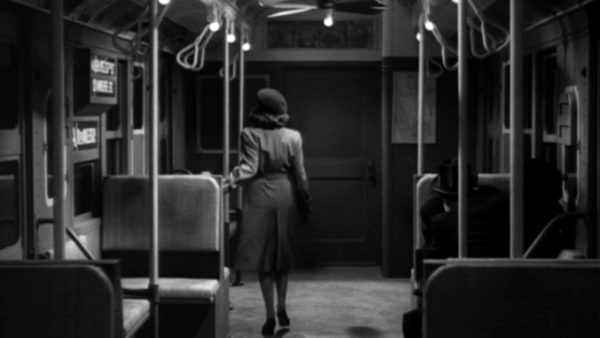
Ultimately I think I like the idea of the film better than its execution. I really felt the cuts and while the switch from Mary to Jacqueline makes The Seventh Victim stand out, it’s hard not to resent the lack of Jean Brooks in a lot of this film because she’s so commanding (and far more interesting than bland Kim Hunter). Overall it’s a 3/5 for me.
What’s your final rating (out of 5) for The Seventh Victim? And where can people get in touch with you if they want to follow up?
You never know, I think it might grow on you! As you can tell I’m a huge fan. Despite its flaws, there are scenes and images from this film that have haunted me for years. It would make a great double bill with Mulholland Drive. I give it a 4.5 out of 5 and encourage fans of dreamlike noirish queerish psychological horror to hunt it down and check it out. I can be found on twitter at @dd_toronto and my website is daviddemchuk.com.
Next time: we’re going family-friendly gateway horror with 1987’s The Gate, which was selected by Bryan Christopher.